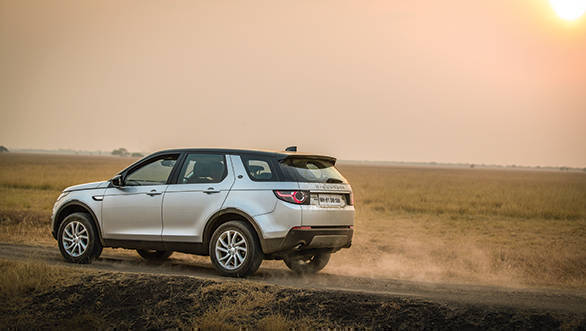Off-Road Driving - The Right Way
Lately, off-road driving has caught on in a big way. We now have a range of off-roading events including the incredible RFC (Rain Forest Challenge). Clubs and groups have come up and a fair number of enthusiasts are modifying their SUVs and venturing off-road. Access to parts and the know-how to build off-road machines has improved. This has opened up another sphere of motoring for enthusiasts. Most of this off-roading is done as a group activity, over a decided route and in a fairly controlled environment. In case you get stuck, or even if your vehicle breaks down, help is at hand. And if you follow the specified safety protocols, the only real fear is of bruising your ego or damaging your vehicle.
But driving solo off-road is a completely different challenge. Especially when you are on an overland journey and suddenly encounter a broken bridge, landslide or some other such obstruction and have to make your own road. In my opinion, traversing difficult terrain on your own is what separates the men from the boys.
Both require a totally different mindset. In a group, you possibly follow the tracks of others and it's only if you are leading, that there is a bigger responsibility. But still, if you get stuck the others are there to help. On your own, you cannot afford to get stuck. Otherwise, it can be a very long walk. And I am speaking from experience.

Many moons ago, I was touring the forests of Central India. I was in my trusty Maruti Gypsy and was booked to stay at a FRH (Forest Rest-House) deep in the jungle. Early one morning from a village, my friend and I fetched a couple of forest guards who were to be our guides on this 'wild getaway'. Soon after entering the forest we found ourselves on an unused track. As this was a hilly region, we often had to engage four-wheel low to get past the more difficult obstacles or climb up the steeper slopes.
Towards late afternoon we came to a hill covered with dense forest. The path was overgrown and barely visible and as it was turning constantly, one did not know what lay beyond the next corner. A surprise was in store, a rather nasty one. With four-wheel low engaged, we were climbing up steadily in second gear. Then before a blind left, the slope got more vertical. As I turned into it, the Gypsy started slowing down and the wheels began to spin. A part of the track had been washed away by water. The little depression we were in was soft as the soil below was exposed. With the overconfidence of youth and stupidity born of inexperience, I quickly shifted into first and pushed down hard on the throttle. The Gypsy lurched forward, but in less than a foot, the wheels were spinning again. Now I floored the throttle, thinking the additional power would get us out. But without traction, power is nothing. The wheels just spun faster kicking up lots of dust, which dug us in further. The tail started sliding and shifting outwards towards the edge. In a panic, I hit the brakes. But instead of stopping, gravity and loss of traction made us slide further back. Our descent stopped only when the rear bumper went and got wedged against a tree. We were stuck.
All the subsequent pushing and shoving by the four of us could not make it budge an inch. The nearest village was some 40km away! The jungle we were in (now part of a Tiger Reserve) was home to tigers and leopards and also sloth bears, the last possible animal you want to meet on foot. It was decided that my friend and I would stay back with the vehicle as we were the least fit and the other two would walk to the village and get help. What is now a most memorable night, back then was indescribably uncomfortable and scary. Next day, fortunately, our companions found some forest department labourers, who pushed the Gypsy out.
That incident taught me a lot. Now I would stop and check what is around the turn. In case stopping all the time is not feasible, I would drive slower. If the wheels start to slip, I would drop revs or increase them just slightly, to find the right engine speed to regain traction. I would also straighten the front wheels to make forward progress easier and get all wheels turning in the same direction. And I surely would not unleash all the power on wheels without traction. Roll back slowly and then try again with a bit more momentum. If that does not succeed, put stones under the wheels, or the rubber matting of the vehicle, grass, and whatever else would aid in gaining traction. And if all fails, I would still keep the vehicle on the path to retain the option of reversing out.
Now when I see many off-roaders bashing their way through obstacles and using brute power to get out of a situation, I catch myself saying, "That's not the way to do it; better not try this when you are on your own. Understand what is happening with the vehicle and why. Do not fight it and don't hurt it. Caress the throttle and feed in the power gently. Feel what the wheels are doing and telling you. Make your response right for the situation. And above all, bring a little finesse into your driving. You should not be using a butcher's knife to do a surgeon's job."














